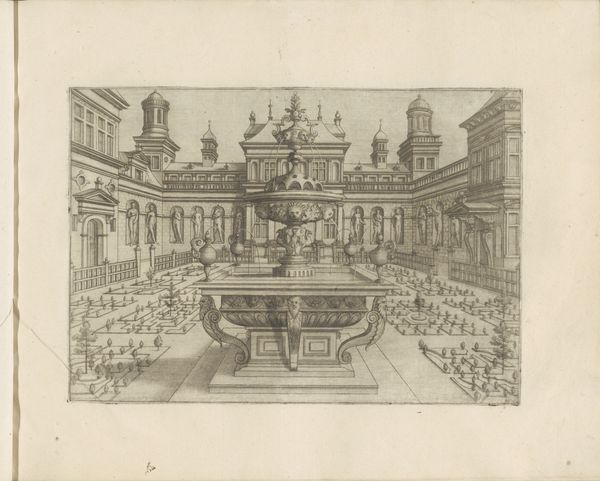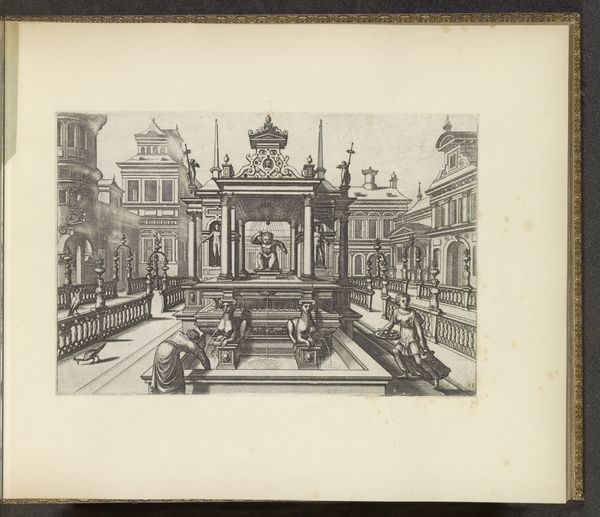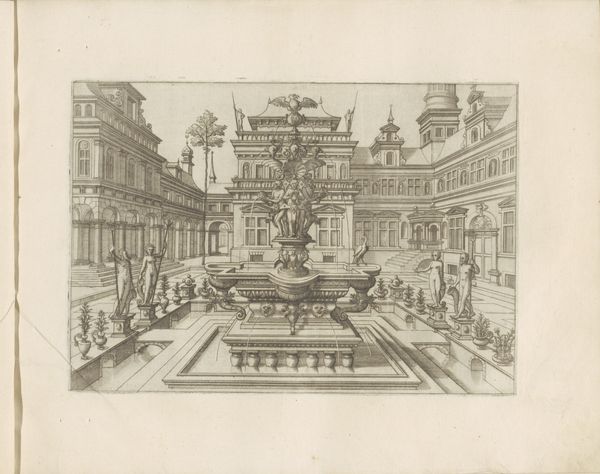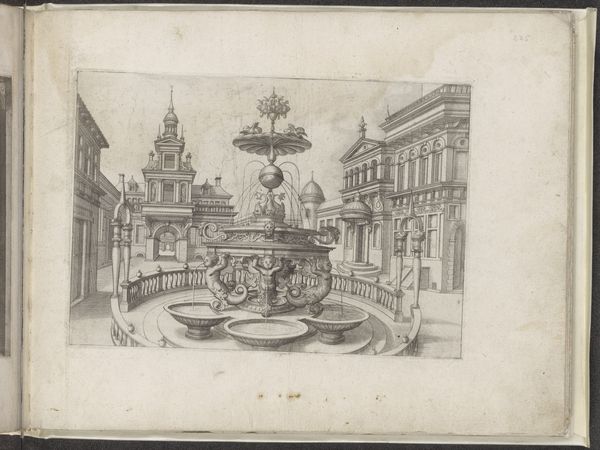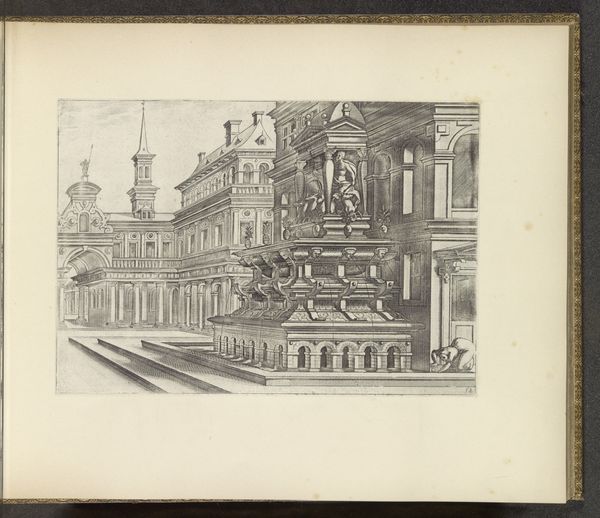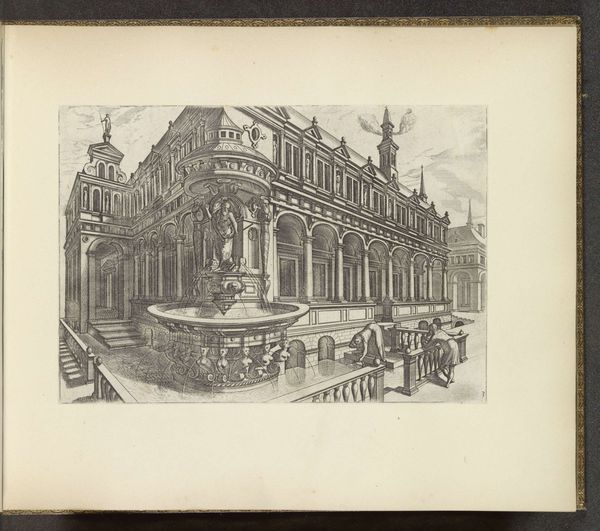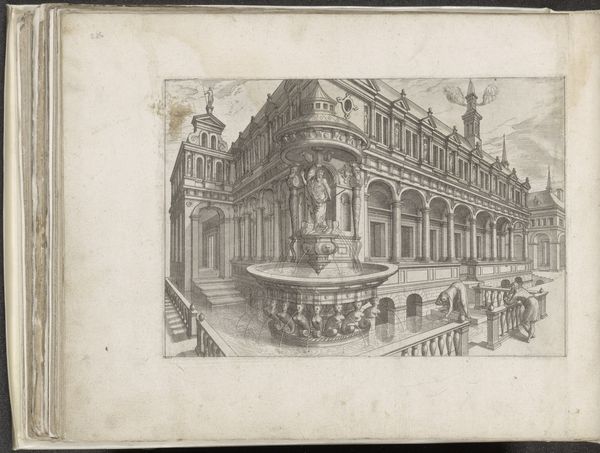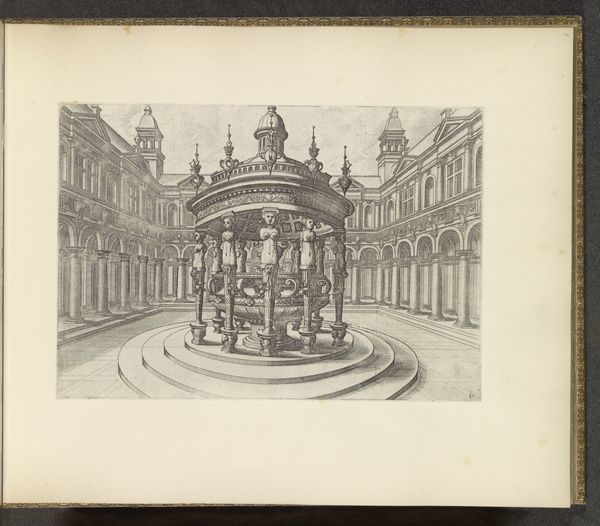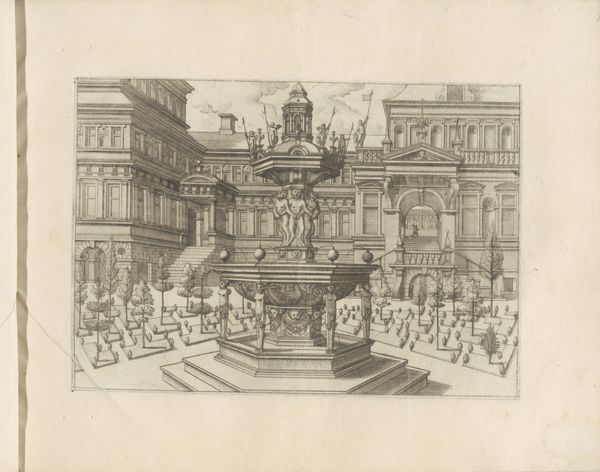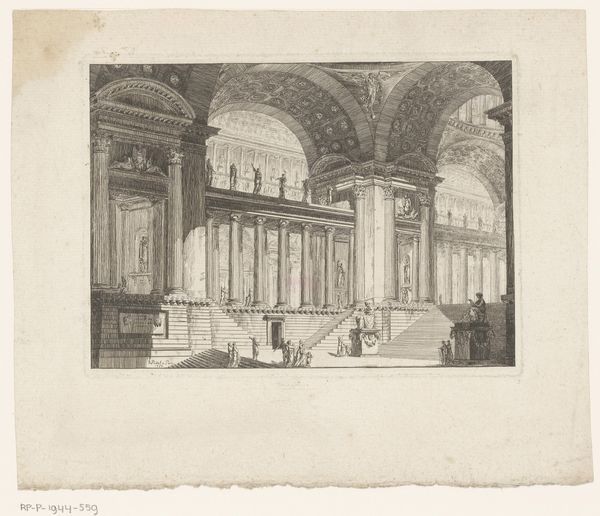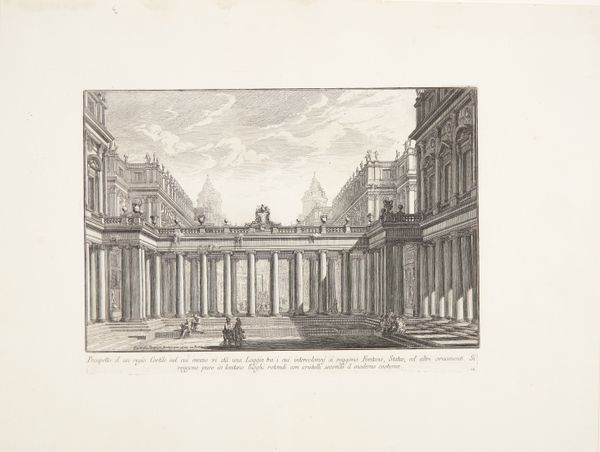
Stadsplein met in het midden een fontein in de vorm van een tempeltje 1568
0:00
0:00
print, engraving
# print
#
11_renaissance
#
cityscape
#
italian-renaissance
#
engraving
Dimensions: height 169 mm, width 249 mm
Copyright: Rijks Museum: Open Domain
Curator: Look at this engraving! It’s a city square meticulously rendered by Joannes van Doetechum in 1568. The heart of it is a temple-like fountain, currently held in the Rijksmuseum's collection. Editor: Wow, it feels intensely controlled, doesn't it? Everything's so deliberate—the water carefully channeled, the figures posed just so. It makes me wonder about the process and its constraints. What type of engraving is this and what limitations of material guided the final appearance? Curator: Knowing Doetechum's roots in the Italian Renaissance, you can see that classical architectural vocabulary at play here. I see idealized form, with its precise symmetry, and controlled perspective—all working together. To me, the light suggests that this place basks in eternal midday sun, a place for philosophical conversations perhaps? Editor: I am thinking that with each precise cut into the copper plate, he wasn’t just creating an image but reinforcing a certain kind of power dynamic. Who was this designed to please? And what level of craftsman created each print? Also, are those people drawing water? Are there municipal projects from the time the print hints towards? Curator: Oh, undoubtedly, there's the patronage piece lurking underneath. Yet, I also find it quite transporting to the era—a sense of imagined grandeur distilled into ink on paper, or, copper. Editor: The city squares always reveal stories—labor, wealth, control of water sources—especially back in the day! Thinking about the social aspect, the function of such a public water access place would be. The way the bodies access it is equally relevant! Curator: In the end, I read into those fountain nymphs, architectural details—each meticulously inscribed—as a dream distilled for a patron and offered up for posterity. But as a work about material production as well? It’s not simply about aesthetics, but about access and who controls it. Editor: Absolutely. I see the dreams encoded in lines and shading but remain very fascinated in seeing the practical aspects as the underlying drive to build such imposing cities that in the end represent power relationships between many social levels.
Comments
No comments
Be the first to comment and join the conversation on the ultimate creative platform.
